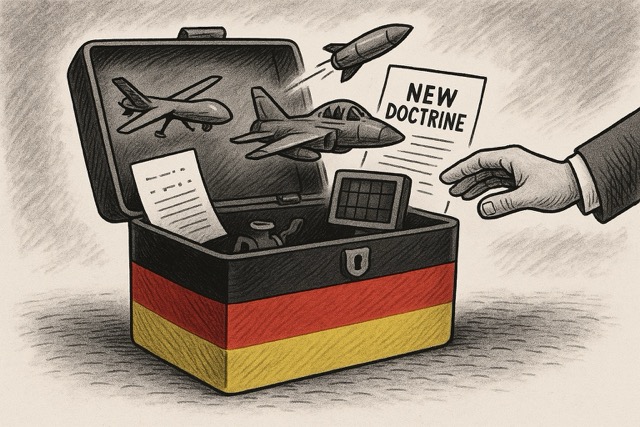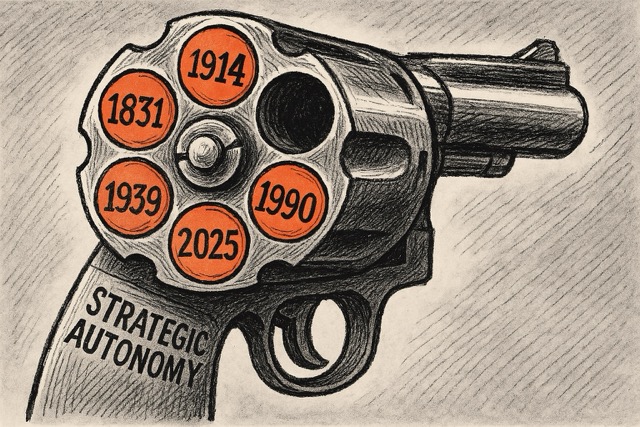From Bismarck to Berlin’s fall, from Versailles to Ukraine — the German military machine always returns. We just never learn to see it coming.
Germany wasn’t always a country. Before Bismarck forged it through blood and war in 1871, it was a loose patchwork of kingdoms — fractured, regional, and relatively contained. But history changed the moment Germany became one. And every time it came together, it didn’t just unify — it armed. And every time it armed, it didn’t just protect — it unleashed something the world couldn’t control.
1871 — Germany is born in the Hall of Mirrors at Versailles, forged not by ideals but by conquest. Bismarck’s Prussia unites the German states after crushing France. A new empire rises — and it doesn’t wait long to build its war machine.
1914 — The weapons fire. Europe is pulled into the abyss. A generation dies in trenches, and Germany is punished. But the punishment isn’t peace — it’s fuel.
1933 — Hitler takes power.
1935 — Germany begins rearming.
1939 — The world burns again.
1945 — Germany lies in ruins, divided by wall and wire. For the first time in modern history, its military instinct is frozen. But not forgotten.
1990 — The Wall falls. Germany reunites. Europe breathes. The American century begins. But the pattern is already stirring.
2022–2025 — A €100 billion defense fund. Calls for “strategic autonomy.” Drones, tanks, missiles, cyberwarfare. A new doctrine for a new world.
And Germany is arming — again.

Germany didn’t stumble into World War I — it prepared for it. From 1898 to 1911, the German Empire rearmed with methodical ambition. It passed Naval Laws, built fleets to rival Britain, expanded its army, and drafted plans for war. By the time Europe realized what was happening, the pieces were already in place. The world chose optimism. Germany chose preparation.
Today, we’re watching a similar window unfold — 2022 to 2025. A special €100 billion defense fund. New doctrines. Long-range missiles. NATO pressure to lead. Industrial rearming not seen since the Cold War. The world, once again, calls it “necessary.” But patterns don’t care what we call them — they just repeat.
We’ve seen this kind of political map before — and it doesn’t end in debate. During the Weimar Republic, Germany’s democratic core collapsed under the weight of humiliation, inflation, and distrust. The people didn’t just lose faith in the system — they turned against it. And when the center failed to offer answers, the country looked to the edges.
On one side, the left raised red flags and revolution. Rosa Luxemburg’s name echoed in rallies and in fear. On the other, nationalists promised pride, borders, and strength. Both sides gained momentum. We know which one seized the moment.
Fast forward a century, and Germany is again watching its center erode. The mainstream parties are bleeding support. The streets whisper protest. And the voting booths now record it. The AfD surges on the right. New hard-left factions grow in the shadows. History isn’t copying itself — it’s rhyming with cruel precision.
Patterns Don’t Wait for Permission
History doesn’t always repeat — but it often reloads.
Germany was unified in 1871 and armed for war within a generation. It was humbled in 1919, then rearmed again by 1935. It was divided in 1945, then reunified in 1990. And now, in 2025, it is once again preparing for military leadership — this time under banners like “strategic autonomy” and “European defense.”
But something is different now — and maybe more dangerous. There is no Treaty of Versailles this time. No Marshall Plan guardrails. No Cold War chessboard holding things in place. Only a fracturing European Union, a war-weary West, and a trillion-euro arsenal in the hands of a country with no modern precedent for this kind of military power.
Germany may not be the villain. But it may, once again, be the fuse.
And if the fuse is lit, the world won’t ask why Germany rearmed — It will ask why no one stopped it.

